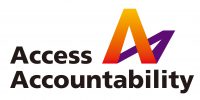One of the most difficult steps when interviewing in human rights is designing the right questions for the demographic or sample pool you are targeting. Lack of clarity, over-complicated questions, a confusing answer key or questions which create discomfort for the respondent can undermine your research. This article looks at three key rules for getting your survey right.
Step 1: Decide whether the survey should be quantitative or qualitative

Whether you go for a quantitative or qualitative study will determine the types of questions that will be asked.
Qualitative research aims to obtain an understanding of the detailed reasons, opinions, and/or motivations around a particular issue. It elicits statements, explanations and examples that can be used by your organization to understand an issue in depth. However, due to the time and resources required for each interview, the total number of respondents is usually fewer.
Quantitative research is the opposite. Instead of focusing on the detailed opinions of the sample pool, the focus is on generating numerical data or data that can be used in statistical analysis. It is useful when human rights organizations want to gather larger-scale, representative statistics, which often appeal to advocacy and campaign materials aimed at the media, government bodies, larger advocacy organizations and the United Nations. Due to the efficiency of gathering quantitative data, the sample pool can often be larger.
Further explanation of both can be found here.
Step 2: Choose a survey method that will ensure the best results for your sample pool
If the survey/interview is in-person then you need to take into account how the questions will sound aloud. Some questions can come across as adversarial or insensitive when said aloud compared to when written on paper. In situations where participants have been victims of trauma, questioning can provoke flashbacks or confused responses, and the interviewer should be trained to deal with such cases appropriately.
In the case of paper or internet surveys and interviews, make sure you understand the language being used as well as any important cultural nuances when designing questions. For example, if the survey/interview is written in Korean then it is important to be mindful that the available vocabulary can sometimes be limited, making it difficult to convey accurate meaning when translating from English. However, if a survey is being prepared in Chinese, the larger available vocabulary necessitates carefully selecting the correct tone, word, and grammar structure.
Specific examples of types of survey methods can be found in: How to Get Started Surveys and How to Get Started Interviews.
Step 3: Choose the right questions
After deciding your survey method, make sure you select the right question types that elicit the information you need.
Question types can include the Likert scale, open-ended questions, closed-ended questions, categorical questions, ordinal questions, and interval/ratio questions.
This article breaks down the question types and demonstrates how to structure a good question.
If possible, before you launch your survey, have it reviewed by someone with experience designing and running surveys and/or interviews. Running a small pilot test of your survey can also help flag any problems with the design so that they can be adjusted before rolling it out to the whole sample pool.
By sticking to these three rules, you will be on your way to designing a sound research survey.
Last Updated: May 2018
Author: Haley Joy Herbig

